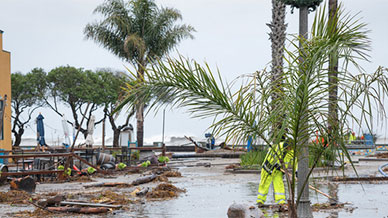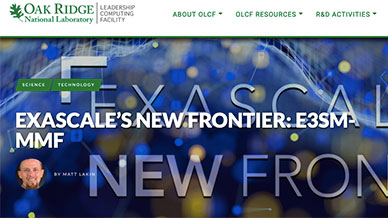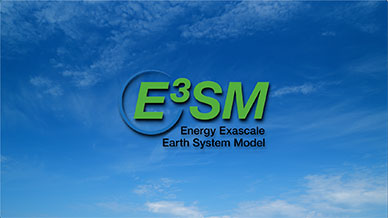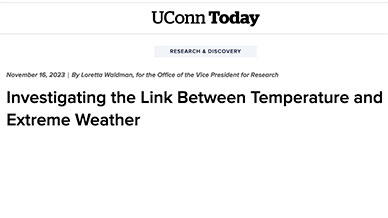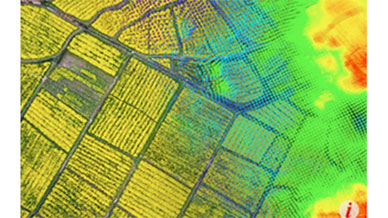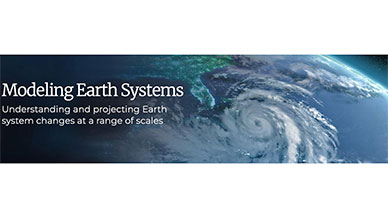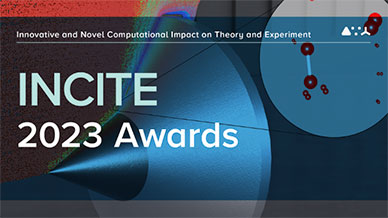Publicity
Collection of News Articles or Videos Relating to E3SM
MIT News
The new approach “nudges” existing climate simulations closer to future reality.
by Jennifer Chu
“Climate change will have an effect on every aspect of human life, and every type of life on the planet, from biodiversity to food security to the economy,” Sapsis says. “
As a first test of their new approach, the team used the machine-learning scheme to correct simulations produced by the Energy Exascale Earth System Model (E3SM), a climate model run by the U.S. Department of Energy, that simulates climate patterns around the world at a resolution of 110 kilometers.
Additional Links:
https://phys.org/news/2024-03-extreme-weather-algorithm-nudges-climate.html
https://www.miragenews.com/mit-algorithm-predicts-extreme-weather-frequency-1203344/
InsideHPC
“Exascale’s New Frontier,” a project from the Oak Ridge Leadership Computing Facility, explores the new applications and software technology for driving scientific discoveries in the exascale era.
Why Exascale?
The Energy, Exascale and Earth System Model-Multiscale Modeling Framework – or E3SM-MMF – project overcomes these obstacles by combining a new cloud physics model with massive exascale throughput to enable climate simulations that run at unprecedented speed and scale. The E3SM-MMF team has spent five years optimizing these codes for exascale supercomputers to provide the highest resolution of climate simulations that can span decades.
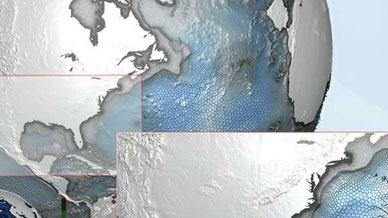
Credit: Image courtesy of “JIGSAW: Multi-resolution Unstructured Mesh Generation for MPAS” by Darren Engwirda, Mark Petersen, Phillip J. Wolfram, Luke Van Roekel, Matt Hoffman, and Xylar Asay-Davis, the winner of the E3SM Best Poster Award.
February 2, 2024
Science X
Sea ice is an important component of the Earth’s climate system. To understand sea ice, scientists need numerical models of how sea ice moves and how it transfers heat and energy
These unstructured meshes are used in the sophisticated Model for Prediction Across Scales and the Energy Exascale Earth System Model (E3SM).
Oak Ridge National Laboratory LCF
Bringing Clarity to Climate Change Forecasts
by Mark Taylor
Frontier Success
“Now that we can afford to run the model at scale, we can start using it for long-term climate simulations over the 40-year cycles we need and at higher fidelity than was ever available before,” he said. “This kind of scale allows us to predict the impact of climate change on severe events and on freshwater supplies and how those events can affect energy production.”
Support for this research came from the Energy Exascale Earth System Model project, funded by the DOE Office of Science’s Office of Biological and Environmental Research; from the Exascale Computing Project, a collaborative effort of the DOE Office of Science and the National Nuclear Security Administration; and from the DOE Office of Science’s Advanced Scientific Computing Research program. The OLCF is a DOE Office of Science user facility.
TECHNILOGY.ORG
On the beach, ocean waves provide soothing white noise. But in scientific laboratories, they play a key role in weather forecasting and climate research. Along with the atmosphere, the ocean is typically one of the largest and most computationally demanding components of Earth system models like the Department of Energy’s Energy Exascale Earth System Model, or E3SM.
Additional Links:
https://phys.org/news/2023-12-custom-software-stabilizes-high-profile-ocean.html
https://www.newswise.com/doescience/custom-software-speeds-up-stabilizes-high-profile-ocean-model
https://www.labmanager.com/custom-software-speeds-up-stabilizes-high-profile-ocean-model-31513
November 30, 2023
E3SM Publicity
The E3SM Project is happy to present a new publicity video about the E3SM project. It was developed by the PNNL communication team and features the E3SM Project’s PI: Dave Bader, Chief Scientist: Ruby Leung, and Chief Computational Scientist: Mark Taylor.

ACM Association for Computing Machinery:
ACM Gordon Bell Prize for Climate Modelling
2023 ACM Gordon Bell Prize Awarded to a 19-Member Team
Additional Article Links:
HPC Trade news coverage:
- https://www.hpcwire.com/2023/11/21/scream-wins-gordon-bell-climate-prize-at-sc23/
- https://insidehpc.com/2023/11/llnl-led-scream-team-clinches-inaugural-gordon-bell-prize-for-climate-modeling/
- https://www.theregister.com/2023/09/19/gordon_bell_climate_llnl/
- https://datacenternews.asia/story/climate-researchers-triumph-in-inaugural-acm-gordon-bell-prize-for-climate-modelling
News compiler coverage:
- https://www.miragenews.com/scream-wins-gordon-bell-climate-prize-at-sc23-1127725/
- https://newsbeezer.com/zimbabwe/climate-scientists-win-the-first-acm-gordon-bell-prize-for-climate-modeling/
Local papers:
Lab highlights:
- https://www.anl.gov/article/argonne-teams-climate-modeling-work-wins-gordon-bell-prize-highest-honor-in-high-performance
- https://www.olcf.ornl.gov/2023/11/16/cloud-simulations-on-frontier-awarded-gordon-bell-special-prize-for-climate-modeling/
- https://cs.lbl.gov/news-media/news/2023/perlmutter-played-key-role-in-two-2023-gordon-bell-prize-winning-projects/
- https://www.llnl.gov/article/50341/llnl-scientists-among-finalists-new-gordon-bell-climate-modeling-award
- https://newsreleases.sandia.gov/gordon-bell-prize/
University highlights:
- https://math.unm.edu/news-events/news/alumna-oksana-guba-part-snl-lead-winning-team-first-acm-gordon-bell-prize-climate
- https://www.theregister.com/2023/09/19/gordon_bell_climate_llnl/
- https://www.olcf.ornl.gov/2023/11/16/cloud-simulations-on-frontier-awarded-gordon-bell-special-prize-for-climate-modeling/

Data Center News:
Climate researchers triumph in inaugural ACM Gordon Bell Prize for Climate Modelling
by Sean Mitchell
An international team of climate researchers has been awarded the inaugural 2023 ACM Gordon Bell Prize for Climate Modelling at the SC23 conference. The award recognises their pioneering work on the project titled “The Simple Cloud-Resolving E3SM Atmosphere Model Running on the Frontier Exascale System”.
The groundbreaking SCREAM (Simple Cloud Resolving E3SM Atmosphere Model) represents a first in climate modelling, being the first to run on the Frontier Exascale system. With its help, the team achieved a record-setting performance of 1.26 simulated years per day in a realistic cloud resolving simulation. The vast data this yielded is a crucial resource for climate scientists seeking to comprehend the behaviour and effects of deep convective clouds, a vital part of the planet’s climate control system.

NERSC:
Perlmutter System Played Role in Two 2023 Gordon Bell Prize Winning Projects
The two teams that won, respectively, the 2023 Association for Computing Machinery Gordon Bell Prize and the first-ever Gordon Bell Climate Modeling Prize both used the Perlmutter supercomputer at Lawrence Berkeley National Laboratory (Berkeley Lab) as part of their research efforts. The winning projects were announced on Thursday, November 16 during the SC23 conference in Denver, CO.

Science:
World’s fastest supercomputers are helping to sharpen climate forecasts and design new materials
by Robert Service
Luca Bertagna, an applied mathematician at Sandia National Laboratory, reported how Frontier enabled him and his colleagues to sharpen the resolution of DOE’s global climate model from 100 kilometers to just 3 kilometers. That allowed the model to simulate the fine-scale atmospheric processes that give rise to clouds, which in coarser models have to be estimated. Because the behavior of clouds in a warming world represents one of the biggest uncertainties in climate change, the higher resolution should help researchers sharpen their predictions of how rising greenhouse gas concentrations will warm the planet, says John Taylor, a high performance computing expert at Australia’s Commonwealth Scientific and Industrial Research Organization.
UConn Today:
Investigating the Link Between Temperature and Extreme Weather
Wang and her collaborators, who include L. Ruby Leung, of Pacific Northwest National Laboratory and Xiaoming Sun, of Los Alamos National Laboratory, will use climate model simulations of extreme precipitation to assess the performance of climate models in reproducing the relationship between temperature and observed extreme precipitation intensity.
The models Wang and her team will evaluate include the Energy Exascale Earth System Model (E3SM) and other IPCC CMIP6 Earth System Models (ESMs). The team will also conduct newly designed experiments using E3SM to understand the physical processes that influence the development of extreme events and their sensitivity to temperature.
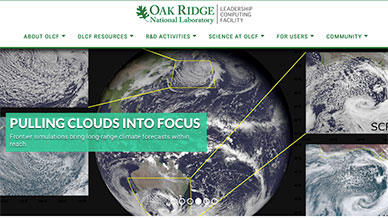
Oak Ridge National Laboratory LCF:
by Matt Lakin
Frontier simulations bring long-range climate forecasts within reach
The world’s first exascale supercomputer will help scientists peer into the future of global climate change and open a window into weather patterns that could affect the world a generation from now.

HPC Wire:
SC23 Spotlight: ACM Introduces First-Ever Gordon Bell Prize for Climate Modeling
Sept. 20, 2023 — In 2023, the Association for Computing Machinery will present its first-ever ACM Gordon Bell Prize for Climate Modelling during a special ceremony at SC23 this November in Denver.
FINALIST 1
The Simple Cloud-Resolving E3SM Atmosphere Model Running on the Frontier Exascale System
Authors: Mark Taylor, Peter M. Caldwell, Luca Bertagna, Conrad Clevenger, Aaron S. Donahue, James G. Foucar, Oksana Guba, Benjamin R. Hillman, Noel Keen, Jayesh Krishna, Matthew R. Norman, Sarat Sreepathi, Christopher R. Terai, James B. White III, Danqing Wu, Andrew G. Salinger, Renata B. McCoy, L. Ruby Leung, and David C. Bader
Additional Articles:

The Register News:
SCREAM resonates in the race for the Gordon Bell Climate Prize
by Nicole Hemsoth Prickett
The new Gordon Bell Prize for Climate Modelling will be awarded annually for the next 10 years, starting in 2023, to acknowledge the efforts of climate scientists and software engineers in this domain.
A team at the Lawrence Livermore National Laboratory (LLNL) and seven other US Department of Energy (DOE) national laboratories are already among those shortlisted for the inaugural Association for Computing Machinery (ACM) Gordon Bell prize.
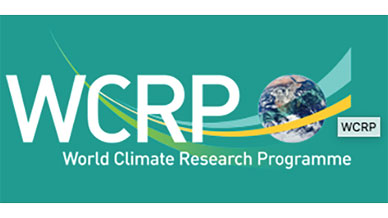
WCRP News:
“Successes and Challenges for the Simple Cloud-Resolving E3SM Atmosphere Model”.
by Peter Caldwell
The new Digital Earths Lighthouse Activity webinar series will start on 12 September 2023 at 15:00 UTC with a talk by Peter Caldwell (Lawrence Livermore National Laboratory, USA) on the “Successes and Challenges for the Simple Cloud-Resolving E3SM Atmosphere Model”.

AIP Bulletin:
DOE Pitching Major AI R&D Initiative to Congress
by Jacob Taylor
The Department of Energy is laying groundwork for a potential multi-billion dollar initiative to develop artificial intelligence tools for scientific and security applications, leveraging its advanced computing capabilities. DOE’s Energy Exascale Earth System Model is flagged as an existing project that could be made much less computationally demanding by applying surrogate models.

Los Alamos Daily Post:
Four Los Alamos National Laboratory Scientists Win DOE Early Career Research Awards
by Carol Clark
LANL scientists who received the 2023 DOE Early Career Research Awards include from left, Andrey Lokhov, Rich Fiorella, Yu Zhang and Kun Liu. Courtesy/LANL.
Rich Fiorella: Probing water cycle processes and extremes in coastal and urban environments using water isotope ratio tracers and numerical tags.
This project develops a new comprehensive water tracking system throughout the Department of Energy’s Energy Exascale Earth System Model (E3SM) that includes stable water isotope ratios, a common geochemical signature used to understand water cycle processes.

GTSC:
Improving Wildfire Predictions with Earth-Scale Climate Models
Two months into the 2023 peak summer fire season, Canadian wildfires had burned 25 million acres of land, disrupted the lives of millions and spread beyond the traditional confines of western Canada east to Nova Scotia. Smoke from the wildfires has drifted to heavily populated regions as far south as Georgia in the United States, across the Atlantic Ocean to Europe and into the Arctic Circle.
The impacts are being incorporated into large-scale simulations of the Earth’s climate, such as DOE’s Energy Exascale Earth System Model that reflects land processes like the carbon cycle for better predictions of the future climate.
Additional Wildfire Articles:
https://cleantechnica.com/2023/08/03/scientists-dig-into-wildfire-predictions-long-term-impacts/
https://www.earth.com/news/wildfire-impacts-are-evolving-due-to-climate-change-but-in-what-ways/

Prevention Web:
Improving wildfire predictions with Earth-scale climate models
by Stephanie Seay
Wildfires have shaped the environment for millennia, but they are increasing in frequency, range and intensity in response to a hotter climate.
The impacts are being incorporated into large-scale simulations of the Earth’s climate, such as DOE’s Energy Exascale Earth System Model, which reflects land processes like the carbon cycle for better predictions of the future climate. E3SM runs on the world’s fastest supercomputers, including the Frontier exascale system at ORNL, providing highly advanced simulations to better predict environmental change that could affect the energy sector.

ARM (U.S.DOE Office of Science):
ARM Broadens Outreach to the Modeling Community
by Jennifer Comstock
ARM staff have begun dedicating additional effort to modeling community outreach to understand how model developers use ARM data and to identify areas in which ARM can further collaborate and expand its resources for model development and evaluation. A natural starting point for this effort is the U.S. Department of Energy’s high-resolution Energy Exascale Earth System Model (E3SM) project.
In April, ARM Modeling Translator Shaocheng Xie, who also leads the development of the lower-resolution E3SM Atmosphere Model (EAM), and I met with E3SM developers Peter Caldwell and Peter Bogenschutz. Caldwell leads the high-resolution Simple Cloud-Resolving E3SM Atmosphere Model (SCREAM) and the next-generation EAMxx, and Bogenschutz is the developer of both the E3SM Single-Column Model (SCM) and the doubly periodic cloud-resolving model DP-SCREAM. Shaocheng and I learned that the E3SM team had just completed a major development effort for SCREAM and DP-SCREAM and was starting to evaluate these models.

NewsWise:
Early Frontier users seize exascale advantage, grapple with grand scientific challenges
by Oak Ridge National Laboratory
Newswise — With the world’s first exascale supercomputing system now open to full user operations, research teams are harnessing Frontier’s power and speed to tackle some of the most challenging problems in modern science.
Energy Exascale Earth System Model (E3SM): This study, led by Sandia’s Mark Taylor, seeks to enable more accurate and detailed predictions of climate change and its effect on the national and global water cycle by simulating the complex interactions between the large-scale, mostly 2D motions of the atmosphere and the smaller, mostly 3D motions that occur in clouds and storms.

T_HQ technology and business:
Exascale supercomputer models a year’s weather in a day
by James Tyrrell
Climate scientists use test window in Frontier exascale supercomputer program to achieve cloud modeling breakthrough.
The Energy Exascale Earth System Model (E3SM) project is developing a new atmosphere model dubbed the Simple Cloud-Resolving E3SM Atmosphere Model (SCREAM), which is capable of using graphics processing unit (GPU) architectures to run efficiently at a global resolution of 3 km cell length. And thanks to a window in the US Department of Energy’s Exascale Computing Project, E3SM’s developers had the opportunity to see what version one of SCREAM was capable of.
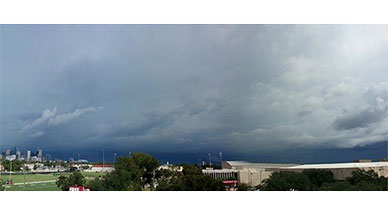
DOE’s ARM user facility supported the Tracking Aerosol Convection interactions ExpeRiment (TRACER). It took data on how human activities affect the local weather and air quality in the area in and around Houston, Texas. Photo by Alex Kotsakis, University of Houston (now at the Universities Space Research Association).
April 21, 2023
EESM News:
Delving into Earth’s Systems Today to Support the Solutions of Tomorrow
by Dr. Asmeret Asefaw Berhe, Director of the Office of Science at the U.S. Department of Energy
Droughts, thunderstorms, heat waves, and warming oceans. Climate change is harming people, communities, and ecosystems right now. But we can solve this crisis. An alternative future is possible, but only if we take drastic action. The Biden Administration is supporting this action through our work to build a clean energy future and support for the Department of Energy’s (DOE) Office of Science.
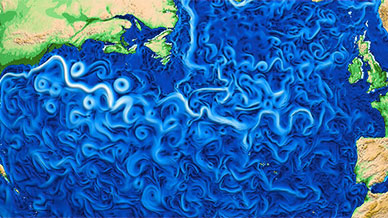
Simulations using the Energy Exascale Earth System Model (E3SM) can help scientists understand what happened in the past and make estimates about the planet’s future.
April 18, 2023
EESM News:
For Earth Systems Scientists, Every Day is Earth Day
Antarctic ice sheets crashing into the ocean. Clouds zipping across the Midwestern sky. Gases from Amazonian trees drifting across hundreds of miles. Wildfires burning across the American West. Extreme heat rising in Oklahoma City. Destructive winter storms raging in Texas.
All of these are related to climate – and so related to energy. The Department of Energy’s Office of Science collects and analyzes data on climate and other Earth systems so that we can understand their interdependence with energy production and use.
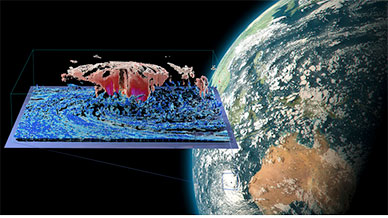
CLOUD PREDICTIONS — A snapshot from a cloud-resolving Simple Cloud Resolving E3SM Atmosphere Model simulation shows a tropical cyclone off the west coast of Australia. The global view displays clouds where the condensed water content is greater than 0.1 grams of water per kilogram of air. The inset shows a 3D cross section with ice mass in red and liquid cloud structure in blue. (Image by Brad Carvey)
April 6, 2023
Sandia LabNews:
Cloud-Resolving Climate Model Meets World’s Fastest Supercomputer
by Mark Taylor
Frontier, built under DOE auspices at Oak Ridge National Laboratory, fills that bill, with more than 9,000 compute nodes. An E3SM team at Sandia worked to ensure SCREAM would run well on Frontier, other graphics processing unit-based systems and more conventional central processing unit-based supercomputers.
Links to Additional Articles:
Cloud-resolving climate model meets world’s fastest supercomputer April 10, 2023
“E3SM”: The Energy Exascale Earth Shysem Model – sciencesprings April 6, 2023
Sandia cloud-resolving climate model meets world’s fastes supercomputer April 10, 2023
SC23 Denver:
Revolutionizing Earth System Modeling through Exascale Computing
by Dave Bader, Mark Taylor
In February 2023, the E3SM project had an early opportunity to run its Simple Cloud Resolving E3SM Atmosphere Model version 1 (SCREAMv1) on Frontier, the first U.S. exascale computer, making it the first cloud-resolving model to run on an exascale computer on GPUs. The team achieved unprecedented results, with the atmospheric component operating at a rate exceeding 1 simulated-year-per-day (SYPD). It accomplished this remarkable feat using 8192 Frontier nodes, each equipped with 4 AMD MI250 GPUs.
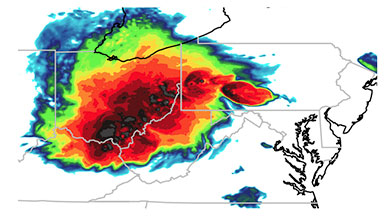
Detail of upwelling radiation from simulated meteorology of the June 30th, 2012, North American Derecho using the E3SM-SCREAM model at 1.6km grid spacing over the Northeastern United States. This derecho, a line of intense, widespread, and fast-moving wind- and thunderstorms, was one of the most deadly and costly in North American history. Image courtesy of Paul Ullrich.
April 1, 2023
ASCR Discovery:
by Paul Ullrich
A UC Davis scientist deploys exascale supercomputers to refine predictions of dangerous weather.
The most recent version of the Department of Energy’s new high-resolution Energy Exascale Earth System Model (E3SM), run on DOE Leadership Computing Facility resources, promises the best forecast ever of extreme weather over the next century.
March 28, 2023
PNNL News and Media Relations:
Modeling Agriculture Matters for Carbon Cycling
by Beth Mundy
To understand Earth’s changing climate, scientists often turn to science-based computer simulations. Researchers strive to make these Earth system models as accurate as possible. Factors such as wind currents, air quality, and weather patterns all play a role. But current modeling has often overlooked one important activity: agriculture.
January 19, 2023
PNNL Atmospheric Science:
Modeling Earth Systems Understanding and Projecting Earth System Changes at a Range of Scales
by Ruby Leung
Understanding long-term trends in regional and global processes, ranging from storm patterns to changes in water temperatures to large-scale atmosphere and ocean circulation, requires accurately modeling the different Earth system components at various scales. Earth system models aim to capture regional and global phenomena that are reflected in multiple aspects of the Earth system—the atmospheric, land/river, ocean, cryospheric, and biological and biogeochemical systems.
NCAR|CGDINCITE 2023 Awards:
E3SM’s Mark Taylor from Sandia National Laboratory received 450,000 node-hours on Summit and 1,250,000 node-hours on Frontier to model the earth’s climatic systems.
The U.S. Department of Energy’s (DOE) Office of Science announced allocations of supercomputer access to 56 high-impact computational science projects for 2023 through its Innovative and Novel Computational Impact on Theory and Experiment (INCITE) program. These awards, which will pursue transformational advances in science and engineering, account for 60 percent of the available time on the leadership-class supercomputers at DOE’s Argonne and Oak Ridge National Laboratories.
Additional link to INCITE 2023 Awards:
Argonne researcher to participate in incite project: Mark Taylor (see page 15)


